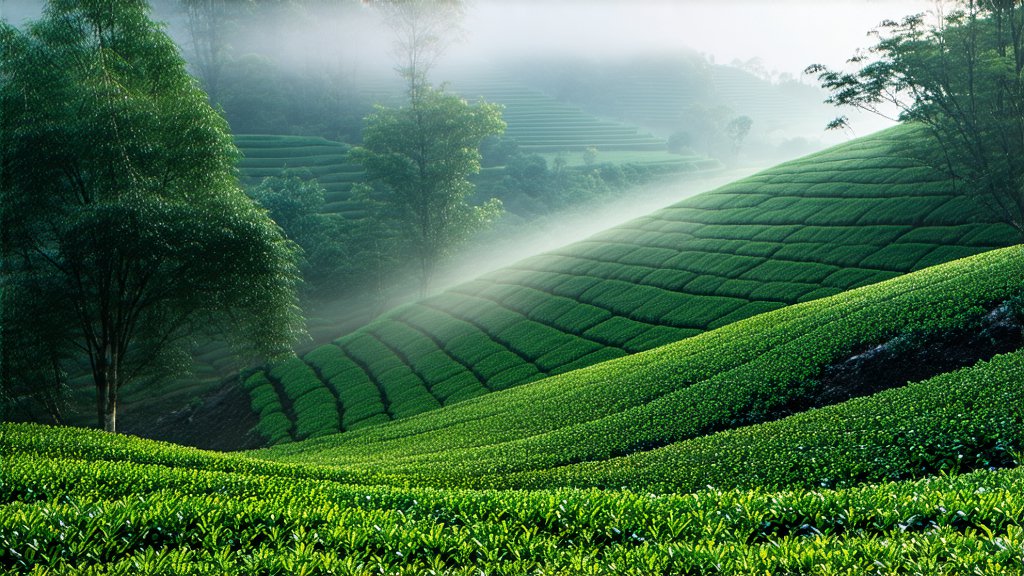
In the vast and diverse landscape of Chinese tea culture, few varieties captivate the senses and imagination quite like Tieguanyin, a distinguished member of the oolong tea family. This exquisite tea, originating from the mountainous region of Anxi County in Fujian Province, has earned a revered place among tea connoisseurs worldwide for its unique flavor profile, aromatic complexity, and rich cultural heritage. Join us as we embark on an exploration of Tieguanyin's history, varieties, meticulous craftsmanship, and the art of its appreciation through the traditional Gongfu brewing method.
A Glimpse into History
Tieguanyin, often referred to as the "Iron Goddess of Mercy," traces its origins back to the early Qing Dynasty, around the mid-18th century. Legend has it that the tea was discovered by a poor scholar named Wang Shifu, who found a wild tea plant growing near a temple dedicated to Guanyin, the Goddess of Mercy. Impressed by its exceptional quality, he propagated the plant, which eventually bore his name, combining "Tie" (iron) from the color of its twisted leaves and "Guanyin" (Goddess of Mercy), symbolizing compassion and purity. Over centuries, Tieguanyin evolved, becoming a symbol of refinement and a staple in Chinese tea culture.
Varieties and Flavor Profiles
Tieguanyin is not a single tea but a category encompassing various sub-varieties, each with its distinct characteristics. The two most renowned types are Xiangxing (fragrant type) and Yaxing (dense type). Xiangxian Tieguanyin boasts a high floral fragrance, often compared to orchids, with a light, crisp taste. In contrast, Yaxian Tieguanyin features a more robust body, denser leaves, and a deeper, earthier aroma reminiscent of sandalwood. These variations cater to diverse palates, offering a spectrum of experiences from delicate to full-bodied.
The Art of Craftsmanship
The creation of Tieguanyin is an intricate process that blends tradition with precision. It begins with the careful selection of tea leaves, typically harvested during the spring and autumn seasons when the plants are at their peak vitality. The leaves undergo a series of meticulous steps: withering under the sun to reduce moisture content, shaking to enhance oxidation, and then rolling to shape the leaves into their characteristic tight spiral form. After initial drying, the leaves are roasted over charcoal fires, a step crucial for developing their signature toasty notes and fixing the flavors. Multiple rounds of roasting may be employed to achieve the desired level of oxidation and flavor complexity.
The Gongfu Brewing Experience
To truly appreciate Tieguanyin, one must engage in the ancient practice of Gongfu brewing, a ritualistic approach that emphasizes control, precision, and mindfulness. The ceremony involves using a small Yixing clay teapot and delicate cups, allowing for precise temperature control and optimal extraction of flavors. Here’s a simplified guide to this art form:
- Warm the Teapot and Cups: Rinse the teapot and cups with hot water to预热 them and remove any impurities.
- Measure the Leaves: Use approximately 5 grams of loose leaf Tieguanyin per 100ml of water capacity of the pot.
- First Infusion: Steep the leaves for about 15 seconds using water heated to around 90°C (194°F). This initial rinse awakens the leaves and discards any residual dust.
- Subsequent Infusions: Gradually increase steeping time for each infusion, typically by 10-15 seconds, adjusting based on personal preference and the strength of the liquor. Tieguanyin can be steeped multiple times, revealing different facets of its flavor with each brew.
- Appreciate the Aroma and Taste: Before sipping, inhale deeply to capture the tea's aroma. Take small sips, allowing the tea to coat your palate fully, and savor its evolving flavors—from floral and fruity notes to creamy textures and a lingering aftertaste that speaks of its mountainous origins.
Conclusion
Tieguanyin stands as a testament to China's profound tea-making legacy, embodying the harmony between man and nature. Its cultivation, production, and consumption are imbued with cultural significance and a deep respect for tradition. As you delve into the world of Tieguanyin, whether through tasting its diverse varieties or practicing the Gongfu brewing technique, you embark on a journey that transcends mere beverage enjoyment. It becomes an exploration of the senses, a celebration of artistry, and a connection to centuries-old customs that continue to enrich our lives today.